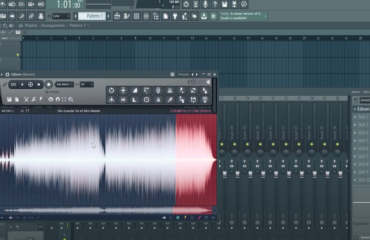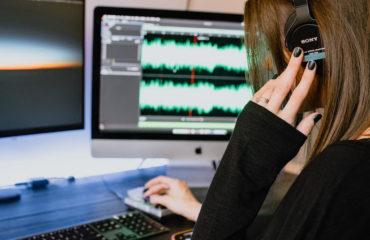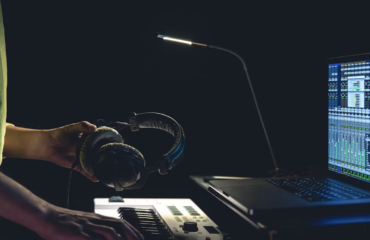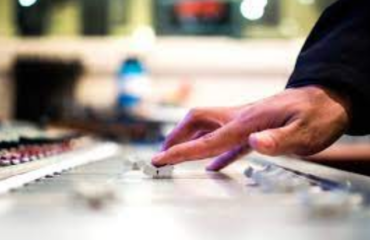In the dynamic confluence of artificial intelligence (AI) and the ethereal realm of musical composition, a profound metamorphosis is unfurling, fundamentally reshaping the very essence of how we conceive, craft, and immerse ourselves in the auditory tapestry of sound. As the sinuous tendrils of AI continue their inexorable advance into sophistication, they unfurl as potent instruments, wielded not by mere engineers but by architects of sonic landscapes, forging new frontiers in music and lyricism. The promise, once tethered solely to the fount of human creativity, now embraces an alliance with algorithms that hum in the digital dawn.
Yet, within this symphony of technological prowess, a melodic dissonance lingers — a chorus of contemplation on the sanctity of the creative process. The evolution of AI’s compositional prowess compels a profound interrogation of the very essence of creativity, traditionally the sanctum of the human artist. The genesis of each note, each lyric, now dances on the precipice of collaboration, an intricate ballet between the organic and the synthetic.
This narrative, a sonic odyssey of sorts, seeks to plunge into the heart of this evolving symbiosis. It endeavors to dissect the sinews that bind human ingenuity and artificial intelligence in the sacred matrimony of music composition. It beckons us to grapple with the resonating implications that echo through the corridors of artistic expression — a resonance that whispers of innovation’s ascendancy and yet trembles with the echoes of the emotive and cultural dimensions that form the very soul of music. In traversing this enigmatic terrain, the imperative emerges not merely as the preservation of a harmonic equilibrium but as the preservation of the visceral, the emotive, and the distinctly human cadence that beats at the heart of musical creation.
The Fusion of Music and Technology Through the Ages
The bond between music and technology has long been part of the evolution of composition. From the earliest musical instruments to the advent of recording technology, musical creation has constantly embraced new tools. The digital age has brought this relationship into sharper focus, allowing for even greater experimentation and innovation.
The Onset of Computational Music Systems
The history of AI in music can be traced back to the experiments of academics and computer scientists in the mid-20th century. These early trials set the stage for more complex systems capable of generating simple melodies and harmonies.
Pioneers in AI-Assisted Music Composition
Pioneers such as Iannis Xenakis and David Cope opened the door to AI in music composition. Xenakis applied mathematical models to music, while Cope’s Experiments in Musical Intelligence became early testaments to the potential of algorithmic composition.
Milestones in AI Music Generation Technology
In recent years, AI music generation has made significant strides. From Sony’s Flow Machines project to Google’s Magenta, these advancements mark a new era of AI capabilities that challenge and expand our understandings of creativity.
How AI Creates New Melodies and Harmonies
AI systems are now adept at creating rich musical pieces thanks to several approaches. Machine learning algorithms analyze vast datasets of music to identify patterns, which are then used to generate original compositions that often bear the stylistic hallmarks of their training data. The outcome can be startling: music that resonates with human sentiments even though it originates from silicon and code.
Algorithmic Composition Techniques
Classical composers such as Mozart and Bach experimented with algorithmic principles in their music, so it’s fitting that modern AI systems have advanced these concepts far beyond human capabilities. These systems can create complex compositions in real time, learning and adapting from each note they generate.
Transformative Learning Models
With deep learning models, AI can absorb the essence of genre and style, recreating or blending them in innovative ways. As AI systems grow more sophisticated, their ability to replicate and recombine diverse musical styles suggests untapped creative possibilities.
The Confluence of NLP and Lyric Generation
Natural Language Processing (NLP), an AI domain focused on the interaction between computers and human language, has taken lyrics writing into uncharted territories. By grasping the subtleties of language, AI can now suggest lyrics that not only rhyme and fit a specific meter but also evoke the intended emotions and themes.
AI’s Approach to Crafting Wordplay
AI systems have also found their place in the nuanced task of lyrical generation. By applying concepts such as Markov models, which predict text sequences based on probabilities, these systems can skillfully craft verses with a level of wordplay that might inspire human songwriters. For artists and producers who look for a Copy ai free alternative, might find certain lyrics generation on Google. They offer various stylistic and thematic patterns, enabling creators to experiment with textual inspiration alongside their melodies. While machine-generated wordplay is improving, the collaborative partnership between human and artificial creativity continues to be crucial, ensuring that lyrics maintain the depth and resonance true to the songwriter’s vision.
Emotional Intelligence and Machine-generated Poetry
While AI can effectively structure lyrics in traditionally poetic forms, its understanding of emotional nuance remains a work in progress. Sentiment analysis has allowed AI to approach the mood of a piece, but the most profound lyrical expressions of the human experience remain, for now, beyond its reach.
Documented Successes in AI-assisted Songwriting
Despite these challenges, there have been notable successes in AI-generated song lyrics. From commercial pop songs to indie experiments, the results have often been surprisingly coherent and impactful, testing the boundaries of what consumers and critics consider to be authentically human art.
Human Emotion and Experiential Depth in Composition
Nestled within the intricate tapestry of music’s allure lies a profound capability to articulate the profound depths of human sentiment and intricacy. The resonances of composers’ lived narratives infuse their compositions with an undeniable authenticity and a relatability that eludes facile replication by technology. It is within the intuitive leaps and the poignant emotional charges that steer the labyrinthine path of human creativity that the very essence of uniqueness and individuality in artistic expression finds its genesis. The symphony of human creation, with its undulating cadence, intertwines the complexities of emotion, rendering a melodic narrative that transcends the binary constraints of mere mimicry.
The Intrigue of Creative Intuition
Creativity often thrives on unpredictability and spontaneous insight, elements traditionally associated with human cognition. AI’s advances have yet to fully replicate the profound and sometimes serendipitous nature of human creativity.
Originality and Cultural Relevance in Human Composed Music
Cultural context plays a crucial role in music composition. Human composers draw on a wealth of cultural knowledge and social cues, crafting music that reflects, responds to, and shapes the zeitgeist. This sociocultural tapestry provides a richness that AI has yet to fully grasp or represent.
Iconic Human Compositions as Case Studies
Throughout history, iconic musical pieces have exemplified the pinnacle of human creativity. From Beethoven’s emotionally charged symphonies to The Beatles’ innovative soundscapes, these works underscore the enduring value of human touch in music.
A Synergistic Human-AI Creative Process
Musicians today increasingly view AI not as a replacement for human creativity but as a collaborator. AI can serve as a muse, offering musical or lyrical suggestions that can spark the imagination of human artists, who then refine and imbue these ideas with emotional depth and personal significance.
Ethical Considerations and Authorship in AI Music
As AI takes a larger role in music creation, the lines of authorship become blurred. The responsible use and acknowledgment of AI contributions, as well as the implications for copyright, are ethical considerations the music industry must navigate.
AI in Music Education and Therapy
AI’s capacity to customize learning experiences and adaptation for individual needs suggests a promising future in education and music therapy. By leveraging AI’s potential, these fields could witness innovative approaches to teaching and healing through music.
The Democratization of Music Creation
AI has the potential to make music creation more accessible. By lowering technical barriers and costs, it allows more individuals to express themselves musically, potentially leading to an expansion in creativity and diversity within the industry.
Changing Tides in Production and Consumption
With AI’s contribution, the production of music could become faster and more efficient, potentially altering the economic landscape of the industry. Meanwhile, new genres and styles may emerge from this unique blend of human and artificial creativity.
Industry Adoption of AI Tools
As mainstream music incorporates more AI tools, the industry is poised to undergo significant changes. The integration of these technologies in music production and the audience’s reception of AI-assisted music will likely redefine what it means to be a musician or a composer in the modern era.
AI’s Emotional Intelligence Quandaries
Replicating the full spectrum of human emotion is perhaps the most significant challenge facing AI in music. Emotional resonance comes from a shared human experience; an AI, no matter how advanced, lacks this intrinsic connection to the human condition.
Quality and Diversity of Data
AI systems are only as good as the data they’re trained on. To produce truly original and diverse music, AI must have access to comprehensive and varied datasets, which can be challenging to compile and maintain.
Homogenization Risks
A reliance on AI could lead to a musical landscape where uniqueness is overshadowed by algorithmically determined trends. Protecting against a homogenized future requires a conscious effort to prioritize innovation and diversity in AI training.
Legal Landscape of AI-generated Works
The legal ramifications of AI-generated music are complex. Issues of copyright and proper licensing are increasingly pertinent as AI becomes more capable and widespread in the music industry.
Conclusion
Music, an intricate intersection of artistic expression and technological innovation, undergoes a mesmerizing metamorphosis as artificial intelligence transcends its traditional human confines. The perpetual discourse between mortal composers and the relentless algorithms of AI holds the tantalizing promise of reshaping the very topography of the musical realm. To foster the flourishing symbiosis between these divergent creative pulsations, the music industry finds itself at a crossroads demanding astute navigation—a journey through uncharted harmonies where the sacred tapestry of human creativity intertwines with the avant-garde possibilities AI unveils.
In this intricate dance of man and machine, the orchestra of the future must tread the tightrope, meticulously preserving the ineffable essence of human ingenuity while opening its arms wide to the unexplored vistas unfurling through the circuits of artificial minds. The destiny of music composition hangs precariously on the fulcrum of this delicate equilibrium. It demands not merely an acknowledgment but an embrace of the dichotomy—where the heartbeat of melody and the synaptic hum of algorithms coalesce into a symphony of unparalleled richness.
The rhythmic pulse of this harmonious coexistence, one that transcends the binary boundaries of creator and creation, propels us into a future where the soulful cadence of human emotion remains the unwavering nucleus of musical creation. This future beckons us to traverse the intricate labyrinth between the known and the unknown, where the burstiness of creativity sparks in unpredictable cadence—a testament to the profound collaboration between human intuition and the algorithmic enigma.








